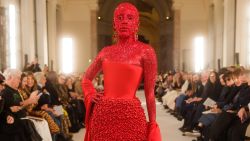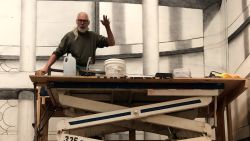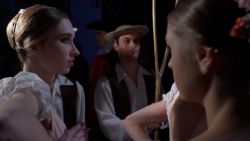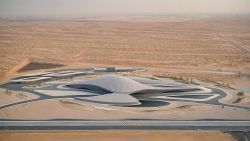I haven’t been walking around “A Forest Where Gods Live” for long, when I realize I’ve become part of the exhibit. As I stroll through a vast azalea garden, the bushes light up, their bright gold glow radiating across the field as sensors on the plants transmit the news of my presence to each other.
It almost feels as if the azaleas and I are interacting – having a primitive form of conversation. After I pass, the bushes dim, returning to a gentle cycle of brightening and darkening, as if they are visibly breathing.
The deep connection between people and nature is the central theme of this fantastical – it must be said, slightly trippy – exhibition by teamLab, a Tokyo-based art collective that specializes in combining art with technology to create unique, immersive experiences.
'A Forest Where Gods Live': latest show by Japanese art collective teamLab
Blurring boundaries
“A Forest Where Gods Live” is a digital art exhibition, that uses lights, projections, sensors and sound to turn nature into a work of art.
It’s set in Mifuneyama Rakuen, a 5 million square foot (500,000 square meter) pleasure garden created in Saga Prefecture in Kyushu, in 1845, towards the end of the Edo Period.
A labyrinth of rocks and caves, with a traditional tea house, a collection of Buddhist statues, and ancient, sacred trees, the park sprawls at the foot of the rugged, towering Mount Mifune. It is home to 5,000 cherry blossom trees, and 50,000 azaleas – the stars of teamLab’s show.
Toshiyuki Inoko, teamLab’s founder, CEO and creative driving force, says he chose the park because it is rich in nature that once flourished in the wilderness – before humans interfered with the Japanese landscape.
His intention is to blur the boundaries between art and nature, and between people and other forms of life. He wants to take us back to our evolutionary roots. “People in the old days were more conscious of the fact that we are a part of nature”.
Digital creations
The digital creations have no physical impact on the plants and rocks Inoko uses as a canvas.
“Like light and sound, the technology is not material,” says Inoko. “I can create things using nature just as it is.”
He does this by hiding lights, projectors and sensors on and around the plants, but how exactly the technology works is a closely guarded trade secret. The effect is magical, and mesmerizing, drawing attention to both the quiet beauty of the natural world, and the glittering drama of the digital displays.
The exhibition consists of 14 installations scattered around the park. Standouts include “Universe of Water Particles on a Sacred Rock,” a spectacular, simulated waterfall which cascades down a large rock; and “Ever Blossoming Life Rock,” a giant, moss-shrouded boulder on which digital flowers are born, grow, bloom, wither and die, in an endless cycle of life. The effect is hypnotic.
“Split Rock and Enso” draws on the long tradition of Japanese calligraphy – a favorite theme for teamLab. Enso is the Zen practice of drawing a circle – symbolizing enlightenment, truth and the universe – with a single brush stroke. The circle is projected onto a large rock which has been split by the roots of the maple tree that grows on top of it. As plumes of inky smoke seemingly puff into the air, the digital Enso captures the fluid, expressive nature of a calligrapher’s brush stroke.
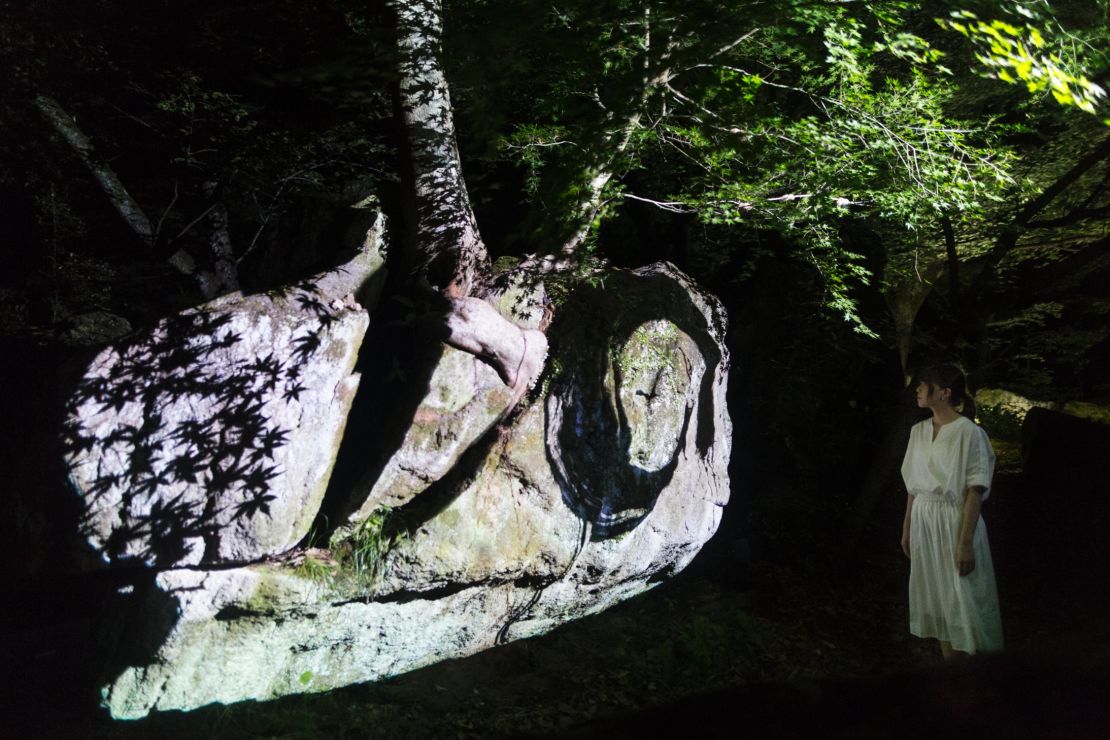
The great outdoors
Established in 2001, teamLab has 450 staff who collectively describe themselves as “ultra-technologists.” The team includes artists, architects, designers, animators, programmers and engineers. They have mounted exhibitions in outdoor spaces before, but “A Forest Where Gods Live” is the largest and most ambitious of their “Digitized Nature” projects to date.
Inside the interactive art installations featured in DMM. Planets Art by teamLab
Previous exhibitions have included “Crystal Universe” which was staged inside, but used mobile devices, sensors and computer renderings to take visitors on a multi-sensorial journey to what feels like an alternative world.
It took four years to put “A Forest Where Gods Live” together. A team of 20 stayed on-site in the park over the course of a month, to carry out the installation.
During the day, when they could see what they were doing, they set up the hardware. After sunset, they tested the projections which are only visible in the dark.
In order to celebrate nature, teamLab had to battle with the elements, with the greatest challenge being the weather. Southern Japan’s heat and humidity created condensation inside the projectors, which resulted in blurred images, and heavy rain sometimes shorted the electric circuits.
Their experience hasn’t put them off though – two more outdoor exhibitions are in the pipeline, both in Japan. From December 1 to January 28, 2018, teamLab will be lighting up the ancient stone walls of Fukuoka Castle with an interactive digital projection that reacts to the movements of visitors. And from February 9 to 28, 2018, they’ll be using light, sound and digital technology to transform the river, forest and urban areas of Tokushima City into digital art.


